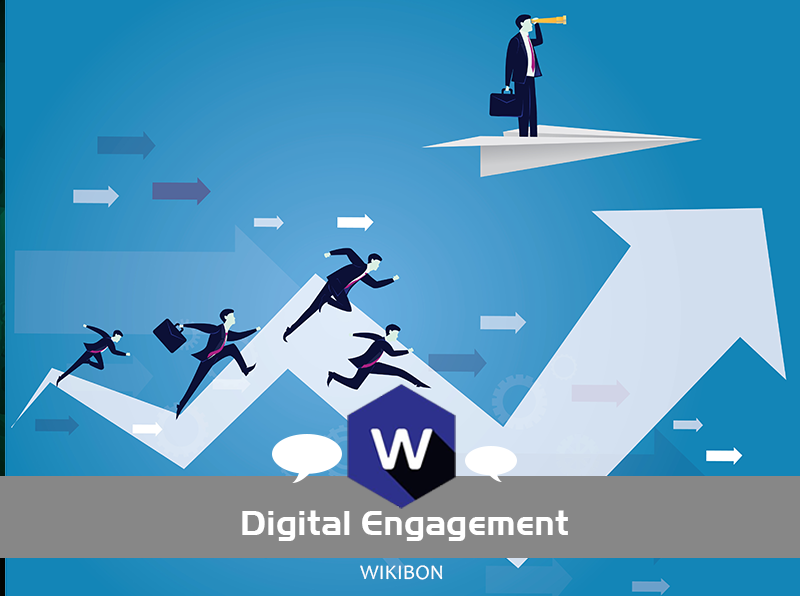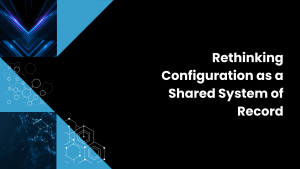
Wikibon recently sponsored a digital community event to discuss a subset of our 2019 Wikibon predictions with the Wikibon community. In a digital community event, we gather practitioners to a Crowdchat, present our ideas, and catalyze conversation by pondering a few questions to the smart folk that assemble. This particular Crowdchat was a special version, what we call an “Action Item.” We’ll be conducting online Action Item events every Thursday at 9:00 AM Pacific time, so feel free to join us, hear what is being said, and offer up your insights.
One benefit of participating is that you have access to everything done or said in the event; the raw data is open. For example, this blog is based on my analysis of this Crowdchat. There’s a lot of great insight in that Crowdchat that I won’t directly cover here.
We invited Sarbjeet Johal (@sarbjeetjohal), an increasingly influential thought leader in the cloud world, to join us during the Crowdchat. All told, we had over 40 thought leaders participate; over 13,000 viewed the results. Here’s what we discussed:
True Private Cloud on the March. Prediction: Cloud will capture nearly 15% of total IT revenue in 2019, but the spending distribution will continue to shift to true private cloud (TPC) technologies operating on-premises and at the edge.
Wikibon has predicted the emergence of true private cloud for a number of years now, and the evidence mounts that we got this call right. Indeed, our research shows that it’s the fastest growing segment of the cloud space; albeit from a smaller base. Moreover, the community largely agrees with our assessment. Here’s a few illustrative comments from the Crowdchat:
@andriven. “Initially the cloud operating model required massive scale – today though is feels like . . . tech innovations continue to reduce the entry point for that model on-prem.
@mikethebbop. “[We definitely see] cautious steps forward to public cloud on the part of very large organizations. The private cloud topic . . . looks accurate.”
RPA Smooths the Cloud Transition. Prediction: “Software Robots” will become increasingly simple to use and low code or no code approaches to automating workflows will drive RPA market growth dramatically, from around $1B today to more than $10B by 2023.
Robot Process Automation, or RPA, is a burgeoning domain that’s receiving significant user, investor, and analyst attention. RPA tools use a programming-by-example approach to integrate applications at the point-of-work. We think it’s poised for greater adoption because it allows developers and business users to focus integration and scaling attention exactly where it will create the most business value: not at the data, not even at the process, but at the point where a user operates and, therefore, where the business value is generated.
Note, however, that the “robot” term in RPA is not longhand for “bots.” Software robots are being constructed and deployed to perform highly complex transactional work at scale; bots, while an important technology, still tend to be focused on personalizing relatively simple engagement function. As @lawrencehecht noted, “I don’t count bots as RPA . . . I see [RPA] as more in line with BPM.”
Of course, RPA is not a technology panacea. What else did the Wikibon community offer about RPA? Two other comments provide color:
@mikethebbop. “RPA is definitely going to grow very large, not as a replacement to legacy no-code workflow, but as a complement.”
@sarbjeetjohal. “True that no cod/Low-Code systems will help RPA marketing but integration between these solutions stays as a big hurdle! We we need is #digitalglue-like capabilities, we already have all the Lego pieces.
Kubernetes Ascending in Multi-Cloud. Prediction: Kubernetes is emerging as the key technology for managing multi-cloud workflows. By 2023, 90% of multi-cloud, enterprise applications will use Kubernetes, making Kubernetes the leading foundation for multi-cloud ecosystems.
The big news here is not that Wikibon thinks Kubernetes is a big deal; it’s clear that Kubernetes has emerged as the de facto approach for handling contain-based systems. Rather, the big news is that we think it will be the crucial orchestration foundation for multi-cloud systems beyond greenfield, container-based applications. What does that mean? Well, you already have heard that we think the general trend will be “move the cloud experience to the data” and not “move the data to the cloud,” which is why we’re big believers in true private cloud technology. That guarantees that the vast majority of enterprises will operate their digital business utilizing a multi-cloud architecture that spans SaaS, IaaS, and TPC options. We think Kubernetes emerges as an enterprise “digital captain” for generally handling control flows among legacy, analytics, AI, and edge applications.
That’s not to say that Kubernetes, as is, it sufficient. The community had much to say about the types of Kubernetes-related invention to expect over the next few years:
@jameskobielus. “. . . the key to “managing multi-cloud workflows” will come from [Kubernetes] plus other key ieces of the cloud-native stack: Helm, Projetheus, Fluentd, Envoy/Istio, Notary, CoreDNS, etc.
@dfloyer. “This prediction needs qualification. The two sides of existing applications and new applications need to meet. Kubernetes will need major improvements to link to existing apps. Conversion is not a solution.
@latoga. “I’d ask, does the security mode of the typical Kubernetes deployment cut it? Service mesh that is all open is problematic for security.”
The Containerization of AI/Edge. Prediction: Enterprises will extend container technology to support AI-based edge applications. By 2021, Kubernetes will be an ecosystem of orchestration services used by more than 50% of enterprises deploying advanced big data and edge-AI applications.
Wikibon has been at the vanguard of understanding the relationship between the edge, the public cloud, and other points-of-processing-presence (PoPP). To summarize, we believe that future application architectures will center on questions of data locality; it’s why we say the cloud will move to the data.
Edge systems, in the form of industrial automation sensors, mobile devices, or other complex end points (e.g., all the Waymo vehicles that drive in front of my home here, in Palo Alto), will generate more data than any other class of technology – by far! Generally, edge systems have employed tools that were specific to the class of system being built. For example, in the supervisory control and data acquisition (SCADA) world of operational technology (e.g., electricity generation), tooling often was very low-level – even at the assembler level – to support the real-time demands of OT; in the mobile world, mobile tools were used.
As the use of AI and ML accelerates in the edge world, this prediction says that it will drag container technology with it. But it also says that the solution will come out of a Kubernetes ecosystem. By that, we mean that Kubernetes will spawn an expanding range of related technologies that invent or emphasize different technologies to support specific processing requirements. For example, we’re not going to use today’s Kubernetes to orchestrate real-time container-based applications. Nor are the security capabilities of Kubernetes robust enough to drop it into and run a nuclear power plant. But the future of complex, multi-cloud applications – including those that run in the most demanding edge environments – ultimately is on a Kubernetes vector. Here’s a taste of what the community had to say:
@andriven. “Containerization at times has felt like a problem looking for a solution (or needing a bigger problem to be relevant to everyone). Enabling AI/Edge could be that large enough problem IMHO – containerization being a force multiplier on something with huge potential.”
@latoga. “How do we stretch the security all the way to the edge? The convergence of multi-cloud to the edge and zero trust [security] is key IMO.”
@jameskobielus. “Perimeter security will need to give way to containerized security where every microservice is its own perimeter and the larger orchestrated connectivity graph provides the metadata on the shifting security contexts of distributed services.”


